Text
Kalamazoo ICMS 2023 CFP

The Game Cultures Society invites abstracts for three sessions at ICMS 2023! The GCS showcases the importance of games —and their various manifestations — in medieval culture. Importantly, the theoretical implications of games extends beyond the temporal and spatial borders of the game space itself into larger aesthetic, ethical, cultural, and social arenas. The GCS serves to highlight the importance and multivalent purpose of games in medieval culture as a way to understand better their function in society both then and now.
Any questions should be directed to Sarah J. Sprouse at: [email protected]
Medieval Gaming II: Playing with Pedagogy (Roundtable):
Games and gamification are buzzwords in education and pedagogy. In addition to popular curricular games such as Reacting to the Past, many teachers are incorporating games, the idea of game-play, and the study of medieval texts as games and play into the classroom. This roundtable session seeks proposals that discuss ways in which we can use the appeal of games/game-play in the classroom to make medieval literature and culture more accessible to the digital generation.
Abstract length: 250 words
Deadline: September 15, 2022
Submit abstracts here: https://wmich.edu/medievalcongress/submissions
------
Games and Medievalism I: The Middle Ages on the Board
There have been excellent studies of the ways the Middle Ages is presented, represented and misrepresented in modern video games, but critical study of analog games lags behind. And yet, medieval-themed board and card games are wildly popular, covering topics from Vikings (Feast of Odin) to art (Sagrada) and literature (Beowulf), the Isamic world (Merv), and even Plague (Rattus Cartus), let alone the current popularity of fantasy role-play like D&D. In what ways do board and card games reflect and reinforce contemporary misconceptions about the Middle Ages, and how can games inform or even disrupt these tropes?
Per Patrick Rael, analog games should be analyzed in terms of game play, aesthetics, narrative, and how they engage with history. It is hoped that contributors will analyze a game or set of related games, addressing as applicable themes such as modern medievalisms (Umberto Eco), participatory medievalisms (Dan Kline), participatory stories (Janet Murray), Orientalism (Edward Said), and analog game studies (the journal of the same name). We invite proposals that explore analog games and their medieval tropes.
Abstract length: 250 words
Deadline: September 15, 2022
Submit abstracts here: https://wmich.edu/medievalcongress/submissions
------
Games and Medievalism II: Reading Games in Medieval
Cultural game theorists have analyzed texts as games or how games are a fruitful analogical lens for examining literature, suggesting that storytellers and audiences play with or against each other within textual game spaces. Medieval manuscripts likewise highlight text as game, with marginalia left by scribes, readers, and illuminators indicating that texts were often understood as interactive games. Texts were also frequently performed, and audiences actively engaged with them by adopting theatrical, playful roles. We invite proposals that explore the gaming relationships between texts, audiences, and storytellers to better understand how literary games served people of the Middle Ages.
Abstract length: 250 words
Deadline: September 15, 2022
Submit abstracts here: https://wmich.edu/medievalcongress/submissions
42 notes
·
View notes
Text
Kalamazoo ICMS 2023 CFP

The Game Cultures Society invites abstracts for three sessions at ICMS 2023! The GCS showcases the importance of games —and their various manifestations — in medieval culture. Importantly, the theoretical implications of games extends beyond the temporal and spatial borders of the game space itself into larger aesthetic, ethical, cultural, and social arenas. The GCS serves to highlight the importance and multivalent purpose of games in medieval culture as a way to understand better their function in society both then and now.
Any questions should be directed to Sarah J. Sprouse at: [email protected]
Medieval Gaming II: Playing with Pedagogy (Roundtable):
Games and gamification are buzzwords in education and pedagogy. In addition to popular curricular games such as Reacting to the Past, many teachers are incorporating games, the idea of game-play, and the study of medieval texts as games and play into the classroom. This roundtable session seeks proposals that discuss ways in which we can use the appeal of games/game-play in the classroom to make medieval literature and culture more accessible to the digital generation.
Abstract length: 250 words
Deadline: September 15, 2022
Submit abstracts here: https://wmich.edu/medievalcongress/submissions
------
Games and Medievalism I: The Middle Ages on the Board
There have been excellent studies of the ways the Middle Ages is presented, represented and misrepresented in modern video games, but critical study of analog games lags behind. And yet, medieval-themed board and card games are wildly popular, covering topics from Vikings (Feast of Odin) to art (Sagrada) and literature (Beowulf), the Isamic world (Merv), and even Plague (Rattus Cartus), let alone the current popularity of fantasy role-play like D&D. In what ways do board and card games reflect and reinforce contemporary misconceptions about the Middle Ages, and how can games inform or even disrupt these tropes?
Per Patrick Rael, analog games should be analyzed in terms of game play, aesthetics, narrative, and how they engage with history. It is hoped that contributors will analyze a game or set of related games, addressing as applicable themes such as modern medievalisms (Umberto Eco), participatory medievalisms (Dan Kline), participatory stories (Janet Murray), Orientalism (Edward Said), and analog game studies (the journal of the same name). We invite proposals that explore analog games and their medieval tropes.
Abstract length: 250 words
Deadline: September 15, 2022
Submit abstracts here: https://wmich.edu/medievalcongress/submissions
------
Games and Medievalism II: Reading Games in Medieval
Cultural game theorists have analyzed texts as games or how games are a fruitful analogical lens for examining literature, suggesting that storytellers and audiences play with or against each other within textual game spaces. Medieval manuscripts likewise highlight text as game, with marginalia left by scribes, readers, and illuminators indicating that texts were often understood as interactive games. Texts were also frequently performed, and audiences actively engaged with them by adopting theatrical, playful roles. We invite proposals that explore the gaming relationships between texts, audiences, and storytellers to better understand how literary games served people of the Middle Ages.
Abstract length: 250 words
Deadline: September 15, 2022
Submit abstracts here: https://wmich.edu/medievalcongress/submissions
42 notes
·
View notes
Photo

It’s a donkey! With wings!
Fol. 272v, Ms. Codex 724
Title: Bible. Latin. Vulgate. [Biblia] [manuscript].
Origin: [Arras, France, ca. 1275-1299]
#medieval #manuscript #france #french #bible #13thc #marginalia #illustration #donkey #wings https://instagr.am/p/CSZ3VD6M46m/
146 notes
·
View notes
Text
CFP: ICMS 2022 (virtual Kzoo)
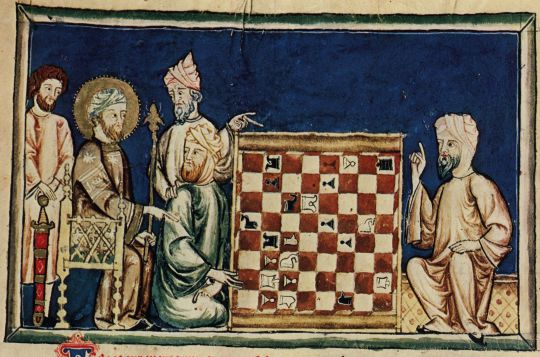
The Game Cultures Society is pleased to solicit abstracts for our three paper sessions at the 2022 International Congress on Medieval Studies (virtual Kalamazoo). Please submit abstracts to Dr. Sarah J. Sprouse ([email protected]) by September 15, 2021.
Session 1: Playing with Game Theory: Playful Genres (Paper Session): Games were one of the most popular forms of entertainment in the Middle Ages and yet only a handful of studies exist on the importance of games in medieval culture. This session proposes to explore the social and cultural significance of medieval genres of gaming, including debates, legal texts, riddles, carols, hunting manuals, and poems and romances traditionally studied for their literary value rather than their ludonarratological functions. Such papers might consider historical analyses of such functions as well as complicating the modern editing practices of these genres of texts.
Session 2: Global Middle Ages and Game Theory (Paper Session): As medieval studies makes the global turn, cultural game theorists working on medieval texts must also be more critical of the roles that games played beyond the purview of western Europe. We propose a session that creates a dialogue between cultural game studies and recent critical conversations in medieval studies on globalism, critical race theory, and other intentionally diversifying analyses. Possible topics include multilingual and cross-cultural reception of medieval games; critical responses to contemporary uses of medieval and medievalist games, and theoretical inquiries into the role of race, geography, and power in relation to the creation of games.
Session 3: Play and Performance (Paper Session): Games and drama were popular forms of entertainment in the Middle Ages. Only a few studies critically engage with the connections between these two pastimes in medieval culture. We propose a session that explores the social and cultural intersections of medieval games and drama, ranging from actual games represented or recreated in medieval and modern drama to social games like dancing as they manifest in mystery and morality plays. This session considers a variety of theoretical perspectives showcasing the relationship between games, play, and performance.
We also look forward to hosting a workshop for the second time: Pedagogical Moves: Gaming the Classroom. This workshop on using games and game design in the classroom will be led by Glenn Kumhera of Penn State-Behrend.
0 notes
Link
In addition to the free streams announced by the Met and the Bayerische Staatsoper, the Wiener Staatsoper will also be streaming previous opera and ballet performances daily from March 15 until April 2; available free worldwide.
231 notes
·
View notes
Photo
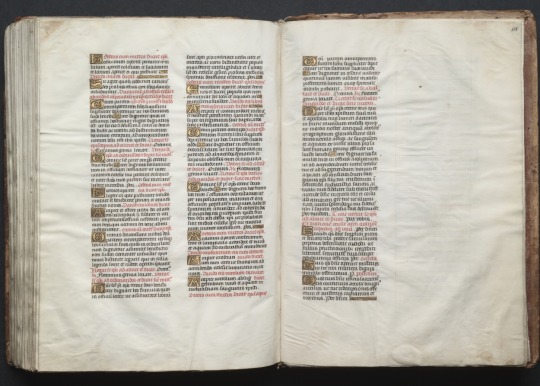
The Gotha Missal: Fol. 157v, Text, Master of the Boqueteaux, c. 1375, Cleveland Museum of Art: Medieval Art
This elegant Latin manuscript is known today as The Gotha Missal after its eighteenth-century owners, the German Dukes of Gotha. The volume was originally copied and illuminated in Paris around 1375 – a commission of the Valois king, Charles V “the Wise” (1364-1380), one of the great bibliophiles of the fifteenth century and brother of Dukes Philip the Bold of Burgundy and Jean de Berry. Manuscript missals were not intended for the lay user, but rather for the use of the celebrant at Mass. The present volume was therefore meant to be used by the king’s private chaplain and was probably housed in Charles’s private chapel, possibly in his principle residence, the Palace of the Louvre (demolished in the sixteenth century). The main decorative body of the missal consists of two full-page miniatures comprising the Canon of the Mass and twenty-three small miniatures. The style and high quality of the decoration points to its inclusion withing a select group of manuscripts accepted today as from the hand of Jean Bondol. Bondol was active at the court of Charles V from 1368 until 1381 where he headed the court workshop and also served as the king’s valet de chambre. The blind-tooled leather binding dates to the fifteenth century.
Size: Codex: 27.1 x 19.5 cm (10 11/16 x 7 11/16 in.)
Medium: ink, tempera, and gold on vellum; blind-tooled leather binding
https://clevelandart.org/art/1962.287.157.b
7 notes
·
View notes
Text
Pandemic arthurian resources 101. Enjoy King Arthur at home!
Hey! Stay at home (if you can), and this will soon pass. In the meantime, here’s some arthurian media to enjoy from your house… EVEN YOUR BED!
Here is a list of free online movies, books, tv shows, audiobooks, courses webseries, videogames etc.
ANCIENT TEXTS and sources to download (link here)!
Free classic books on Gutenberg
A Connecticut Yankee in King Arthur’s Court by Mark Twain
The Legends of King Arthur and His Knights by Knowles and Malory
The Romance of Tristan and Iseult by Joseph Bédier
Four Arthurian Romances by Chrétien de Troyes
Layamon’s Brut
King Arthur’s Knights by Henry Gilbert
The Lady of the Lake by Sir Walter Scott
Idylls of the King by Tennyson
The Story of the Champions of the Round Table by Howard Pyle
The Defence of Guenevere and Other Poems by William Morris
Lancelot of the Laik by Walter W. Skeat
Youtube free webseries
Campaign for Camelot
REX
Legend
Interesting online university free courses
Magic in the Middle Ages
Women’s spirituality in the middle ages
The Book: Scrolls in the age of the book
A History of Violence: from the middles ages to modern times
The History of Medieval Medicine Through Jewish Manuscripts
The Book of Kells
Hadrian’s Wall: life on the Roman frontier
Antisemitism from its origin to the present
Deciphering secrets: the illuminated manuscript of medieval Europe
Short stories in arthurian magazines
1907 July in SCRIBNERS: Galahad’s Daughter (Katharine Holland Brown)
1933 August in COLLIER’S WEEKLY: King Arthur (Teresa Hyde Phillips)
1943 January in WEIRD TALES: The Eager Dragon (Robert Bloch)
1948 March in UNKNOWN: The Enchanted Week End (John MacCormac)
1951 August in FANTASTIC ADVENTURES: Excalibur and the Atom (Theodore Sturgeon)
1954 June in STARTLING STORIES: The Spiral of the Ages (Fletcher Pratt)
Other free books from hathitrust
Studies in the fariy mythology of Arthurian romance (Paton Lucy Allen)
Gliglois, a French Arthurian romance of the thirteenth century
Five Arthurian Poems (William Morris)
The Arthurian material in the chronicles, especially those of Great Britain and France (Fletcher)
The vulgate version of the Arthurian romances (Sommer)
Notes on the Arthurian epic and the Idylls of the king
The Holy Grail; the Galahad quest in the Arthurian literature (Waite)
When knights were bold; an incident of King Arthur’s court (Cooke)
Age of chivalry; or, Legends of King Arthur (Bulfinch)
The Legend of Sir Gawain; studies upon its original scope and significance (Jessie L. Weston)
The knights of the Round table; stories of King Arthur and the Holy Grail (William Henry Frost). Illustrated.
The book of romance (Andrew Lang). Illustrated by H. J. Ford
Lancelot and Guinevere, a poem in dramas
Studies in the arthurian legend (John Rhys)
The Illuminated tree in two arthurian romances (Brugger)
A study of the waste or enchanted land in arthurian romance (Stromberg)
Gawain: a study of certain phases of the Gawain cycle in Arthurian legend (Baskin)
The evolution of Arthurian romance from the beginnings down to the year 1300
The holy graal, and other fragments (Richard Hovey)
The Scottish metrical romance of Lancelot du Lak
Keeping tryst; a tale of King Arthur’s time (Johnston Annie)
Mordred: a tragedy (Henry Newbolt)
The misfortunes of Arthur (Hughes)
The influence of Wace on the Arthurian romances
The meaning of the Idylls of the king; an essay in interpretation (Benoist)
Lancelot, a poem
The quest of Merlin
youtube MOVIES (almost all of them are on and even some rare ones!)
Keep reading
2K notes
·
View notes
Photo
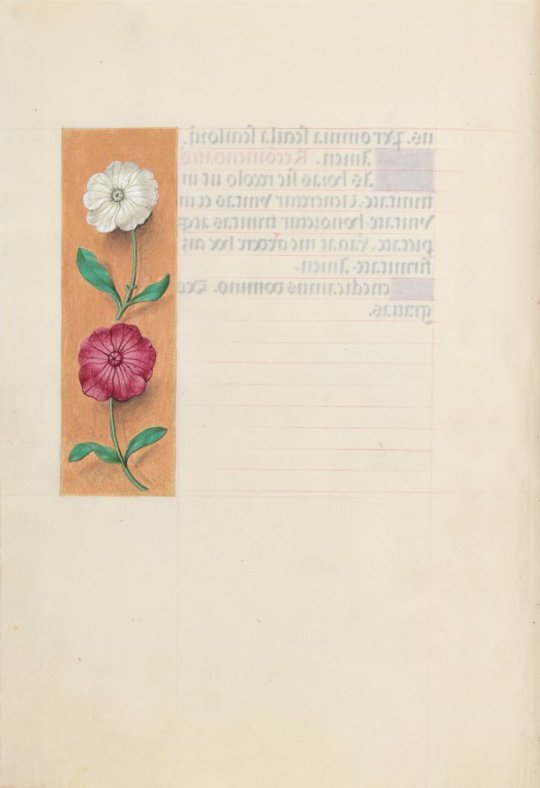
Hours of Queen Isabella the Catholic, Queen of Spain: Fol. 23v, Master of the First Prayerbook of Maximillian, c. 1500, Cleveland Museum of Art: Medieval Art
This manuscript was illuminated by a circle of at least five highly organized manuscript painters active in the Flemish cities of Ghent and Bruges. The principal illuminator was Alexander Bening, who painted the majority of the book’s miniatures. Manuscripts produced by this circle of artists are renowned for the decoration of their borders, which typically feature a rich variety of realistically-painted flowers, birds, and butterflies. This prayer book, called a book of hours, was intended not for a cleric, but for the private devotions of a lay person-in this case, Isabella the Catholic, Queen of Spain (1451-1504). Isabella’s coat of arms embellishes the book’s frontispiece. It is unlikely that the book was commissioned by the Queen herself; rather, she probably received it as a diplomatic gift from someone courting her patronage, perhaps Cardinal Francisco Jimenez de Cisneros. A Franciscan friar, Jimenez was dependent upon Isabella for his advancement, first to the post of Queen’s confessor in 1492, and then to Archbishop of Toledo in 1495.
Size: Codex: 22.5 x 15.2 cm (8 7/8 x 6 in.)
Medium: ink, tempera, and gold on vellum
https://clevelandart.org/art/1963.256.23.b
11 notes
·
View notes
Video
youtube
Manuscript Monday: LJS 293 – Kitāb al-Bayān wa al-tidhkār fī sanʻat ʻamal al-ghubār
Dot Porter, Curator, Digital Research Services at the University of Pennsylvania Library, offers a video orientation to Penn Library’s LJS 293, Kitāb al-Bayān wa al-tidhkār fī sanʻat ʻamal al-ghubār, written by Abū Bakr al-Ḥaṣṣār. This manuscript was written in Baghdad in A.H. 590 (1194), in Arabic, and it is a near-contemporary copy of the first volume of the Book of demonstration and recollection in the art of dust-board reckoning, a 12th-century treatise on arithmetic and algebra.
You can see the full online facsimile of this work in Penn in Hand and you can download all of the images and metadata at OPenn.
from Wordpress: https://ift.tt/3aZSONm
20 notes
·
View notes
Photo

“Luhrasp Hears from the Returning Paladins of the Vanishing Kai Khusrau”, Folio from a Shahnama (Book of Kings) of Firdausi by Abu'l Qasim Firdausi, Metropolitan Museum of Art: Islamic Art
Rogers Fund, 1935 Metropolitan Museum of Art, New York, NY
Medium: Ink, opaque watercolor, and gold on paper
http://www.metmuseum.org/art/collection/search/449020
8 notes
·
View notes
Photo
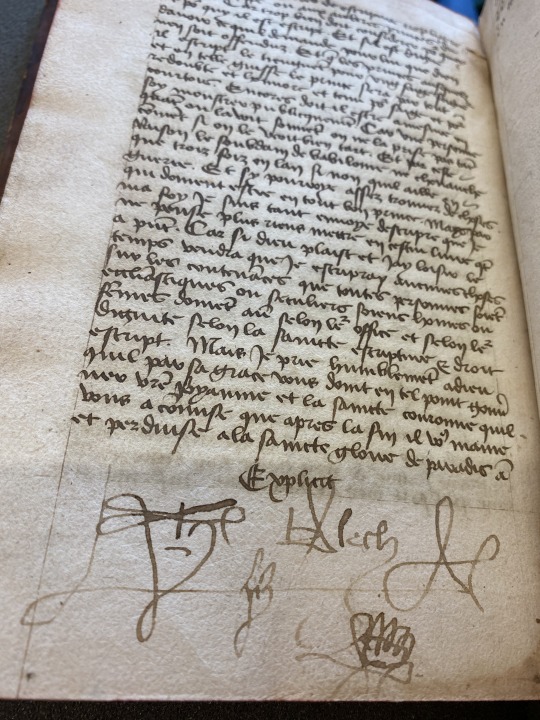



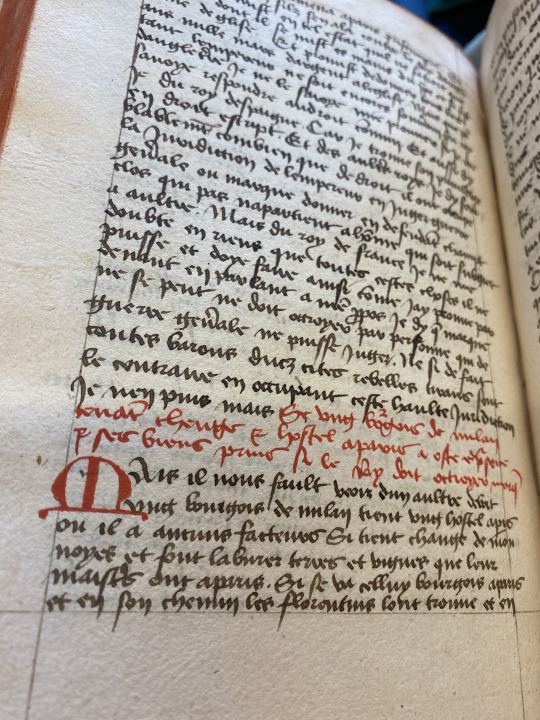

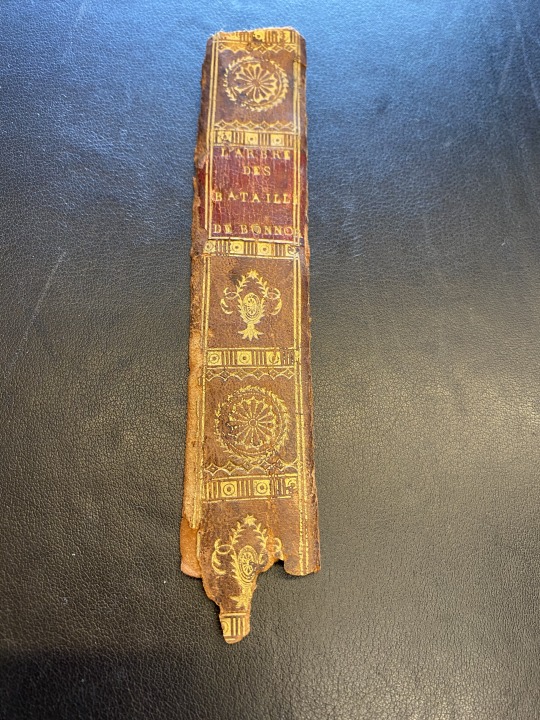
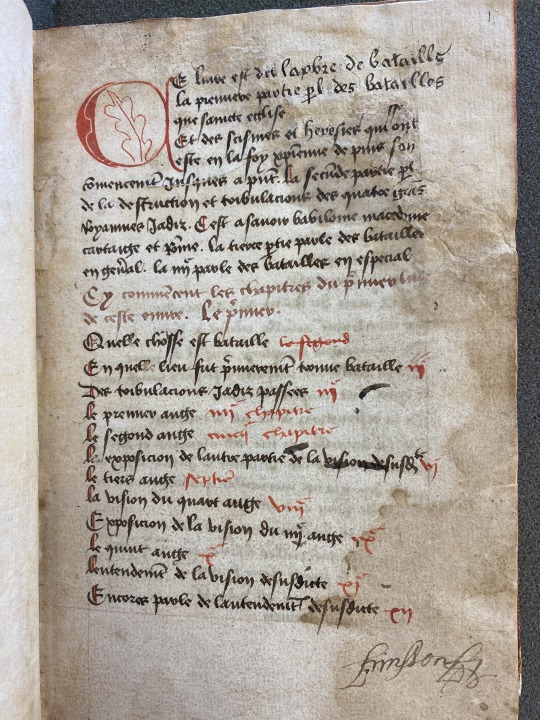
Ms. Codex 622 - L'arbre des batailles
This manuscript features a treatise on war in four parts, written in Middle French by Honoré Bonet, a French philosopher and writer. This manuscript was written in France in the 15th century.
Click here for the facsimile - or stop here for further information.
37 notes
·
View notes
Photo
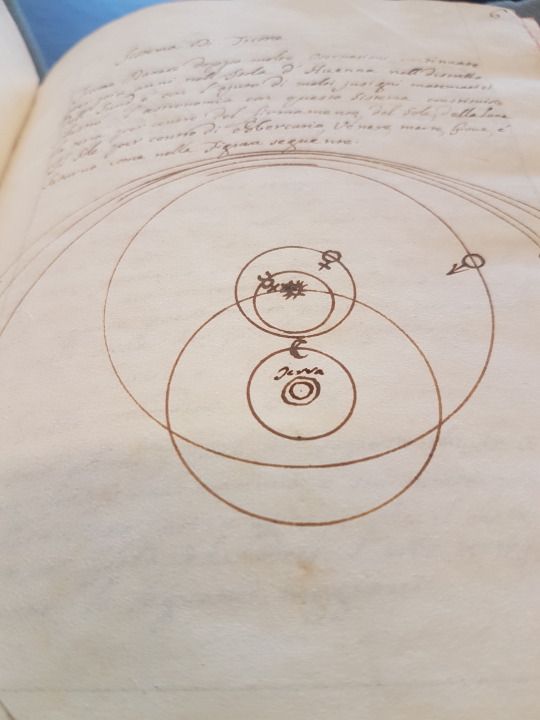
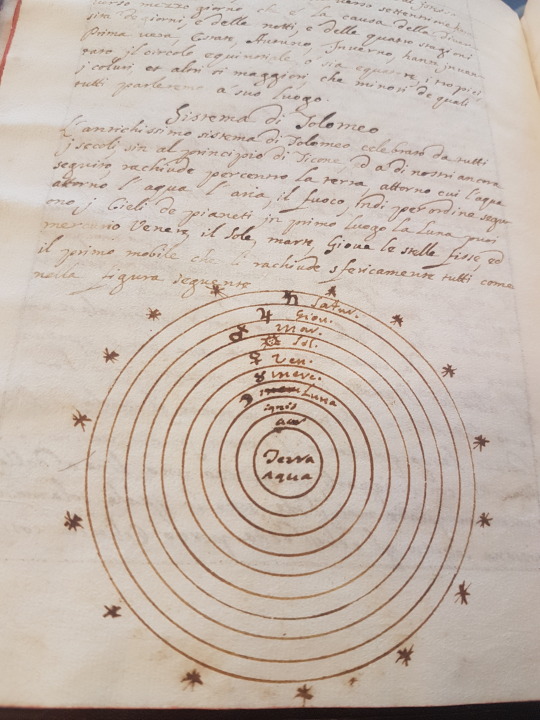



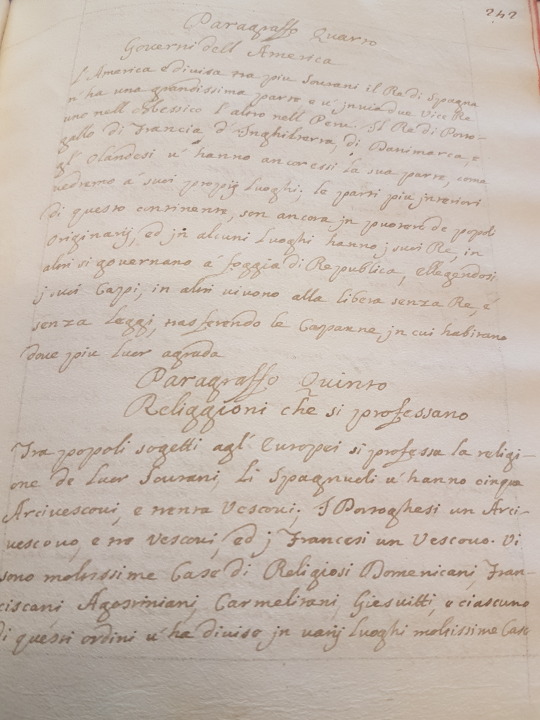



Ms. Codex 418 - Compendio di sfera, e di geografia nel quale si contengono li costumi, governi, religgioni, e proprietà di tutti i paesi dell'mondo …
This manuscript features texts about geography, starting with the general description of Earth, “Della sfera in generale.” It also includes a text about problems in latitude, determining the hour for rising and setting of the sun, declensions, etc, and then a compendium of world geography by continent, such as Europe, Asia, Africa, America, describing physical and political units with some remarks on customs. It was written in Italy in the 18th century.
Do you want to start reading it? Click here for the facsimile, or here for additional information.
48 notes
·
View notes
Photo
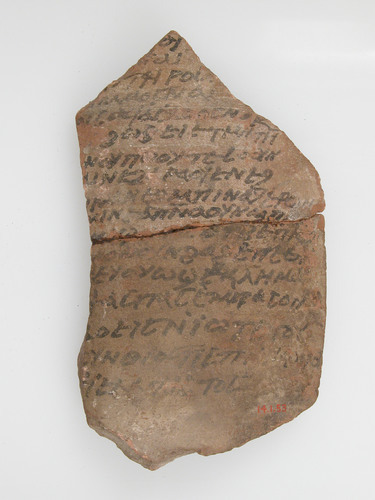
Ostrakon with a Letter to Bishop Pesenthius, Metropolitan Museum of Art: Medieval Art
Rogers Fund, 1914 Metropolitan Museum of Art, New York, NY
Medium: Pottery fragment with ink inscription
http://www.metmuseum.org/art/collection/search/474755
7 notes
·
View notes
Photo

Happy Woodcut Wednesday! This image introduces Michael Puff von Schrick’s Von allen greprenten Wassern (On all Distilled Waters), printed in Nuremberg in 1528 by Jobst Gutknecht. This small, relatively cheap publication was written in vernacular German rather than academic Latin, indicating that it was intended for a lay audience. It describes the uses of some eighty distilled waters, most of which are derived from herbs and flowers.
29 notes
·
View notes
Photo


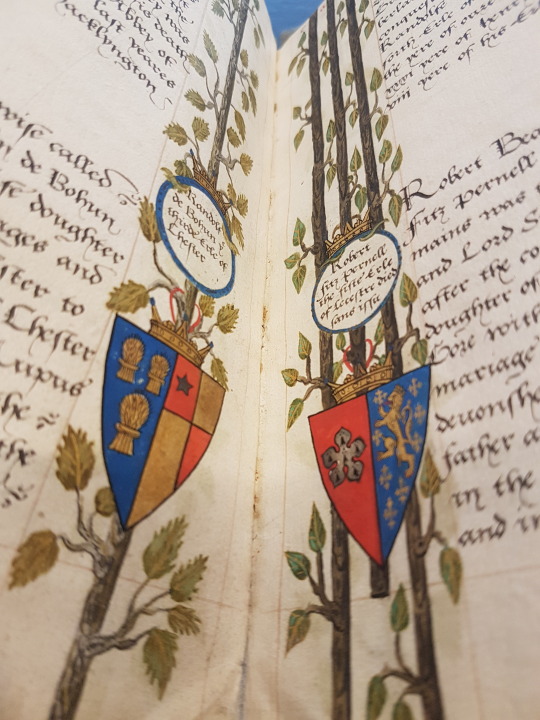


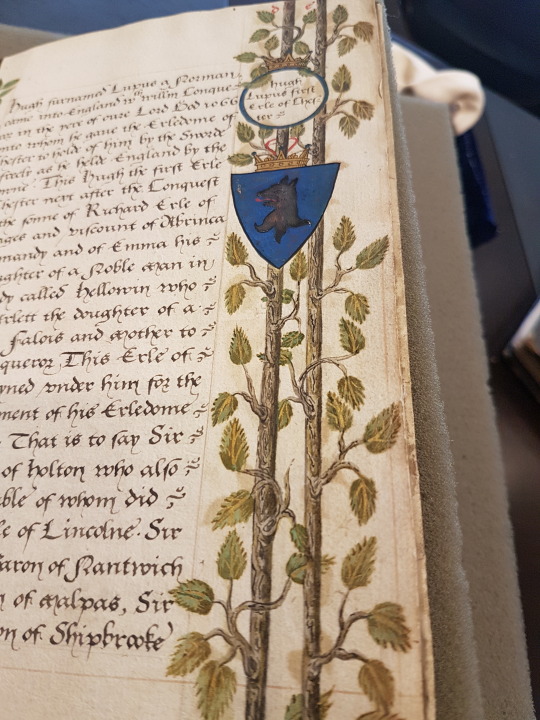

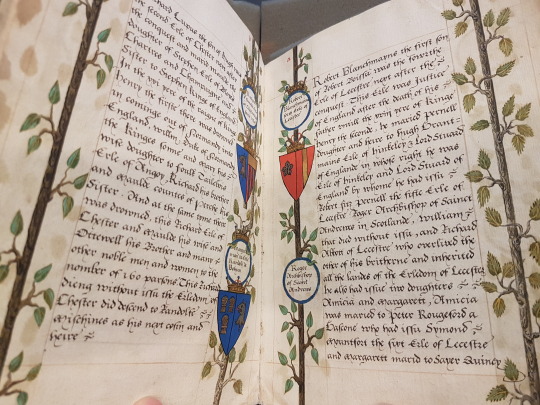


Ms Codex 1070 - Genelogies of the Erles of Lecestre and Chester
What a wonderful manuscript!
This codex features the genealogy of Robert Dudley, Earl of Leicester, tracing his descent from the earls of Leicester and Chester, beginning with individuals of the 11th and 12th centuries, and providing the heraldic devices of the principal members of these families. Although the genealogy may have been compiled in association with Robert Dudley’s appointment as lieutenant of the Order of the Garter in 1572 or the birth of his illegitimate son in 1574, Robert Dudley is mentioned in the introduction and is represented by the final coat of arms, although the lack of his name among those of his siblings is noted in a late 16th- or early 17th-century hand. It is written in a hybrid secretary script, probably in the hand of Robert Cooke, Clarenceux King of Arms. Notice the illuminated border that goes throughout the manuscript and is formed by the family tree that passes through the heraldic shields and roundels with the names of principal family members, painted in a naturalistic style with leaves resembling elm and oak foliage.
You should look at the facsimile (here) for high-resolution images! Or click here for additional information.
523 notes
·
View notes
Photo
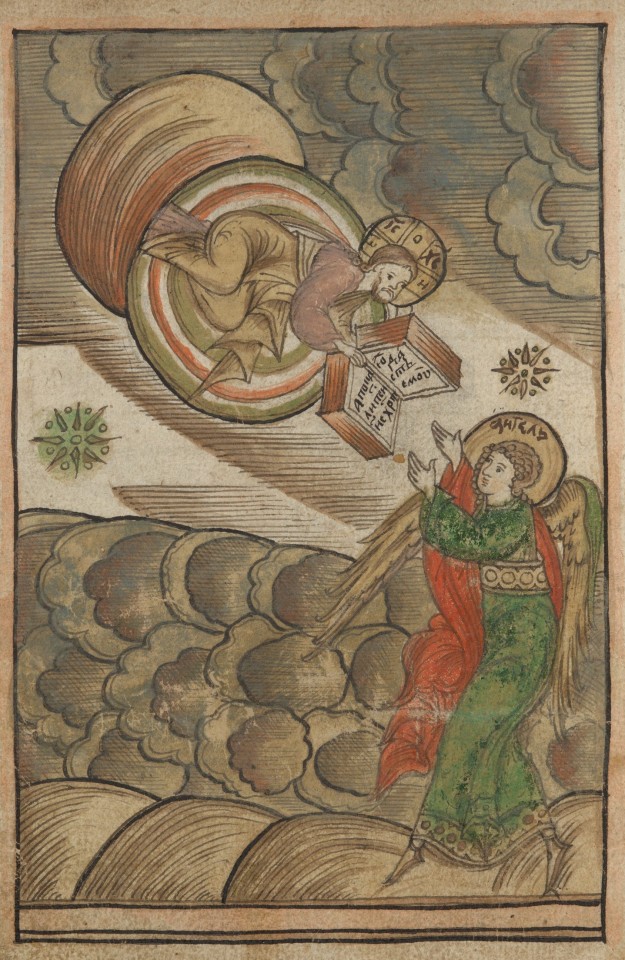
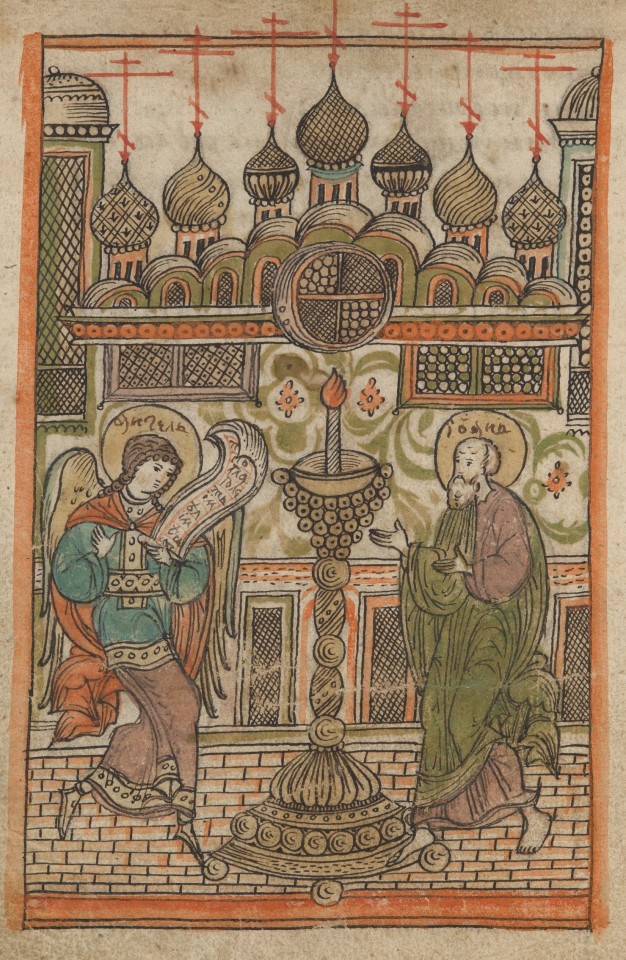
Apocalypse of St. John : with the commentary of St. Andrew of Caesarea : manuscript, 1693-1694.
MS Russ 15
Houghton Library, Harvard University
103 notes
·
View notes
Photo

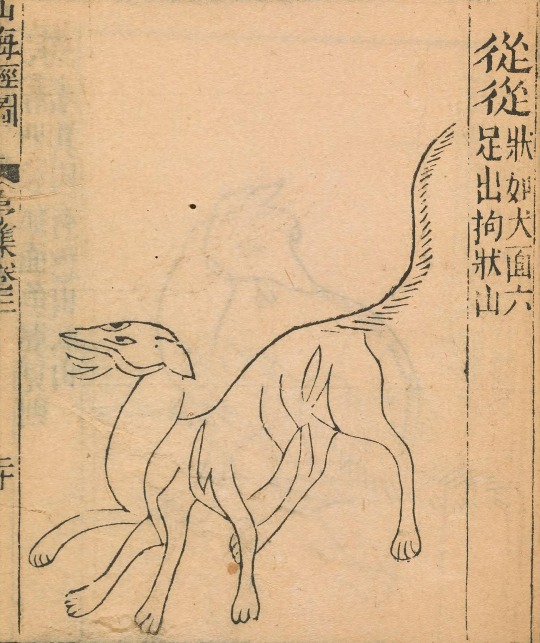
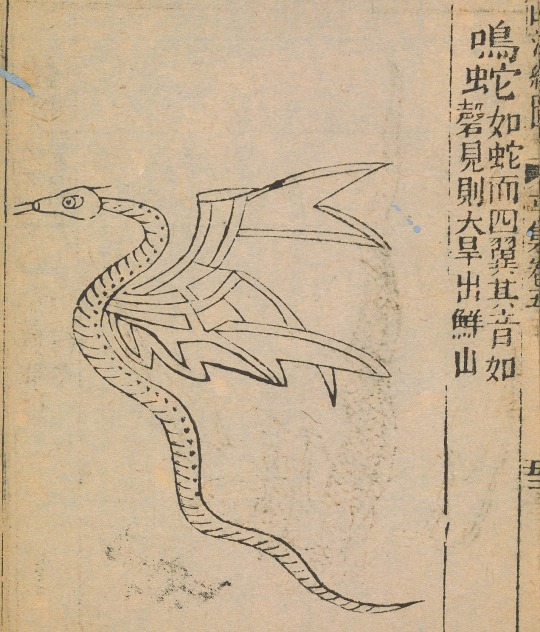
Illustrations of Chinese mythical beasts from vol. 2 of Shan hai jing : er shi san juan, the 1667 edition annotated by Pu Guo.
Full text with many other illustrations available here.
459 notes
·
View notes